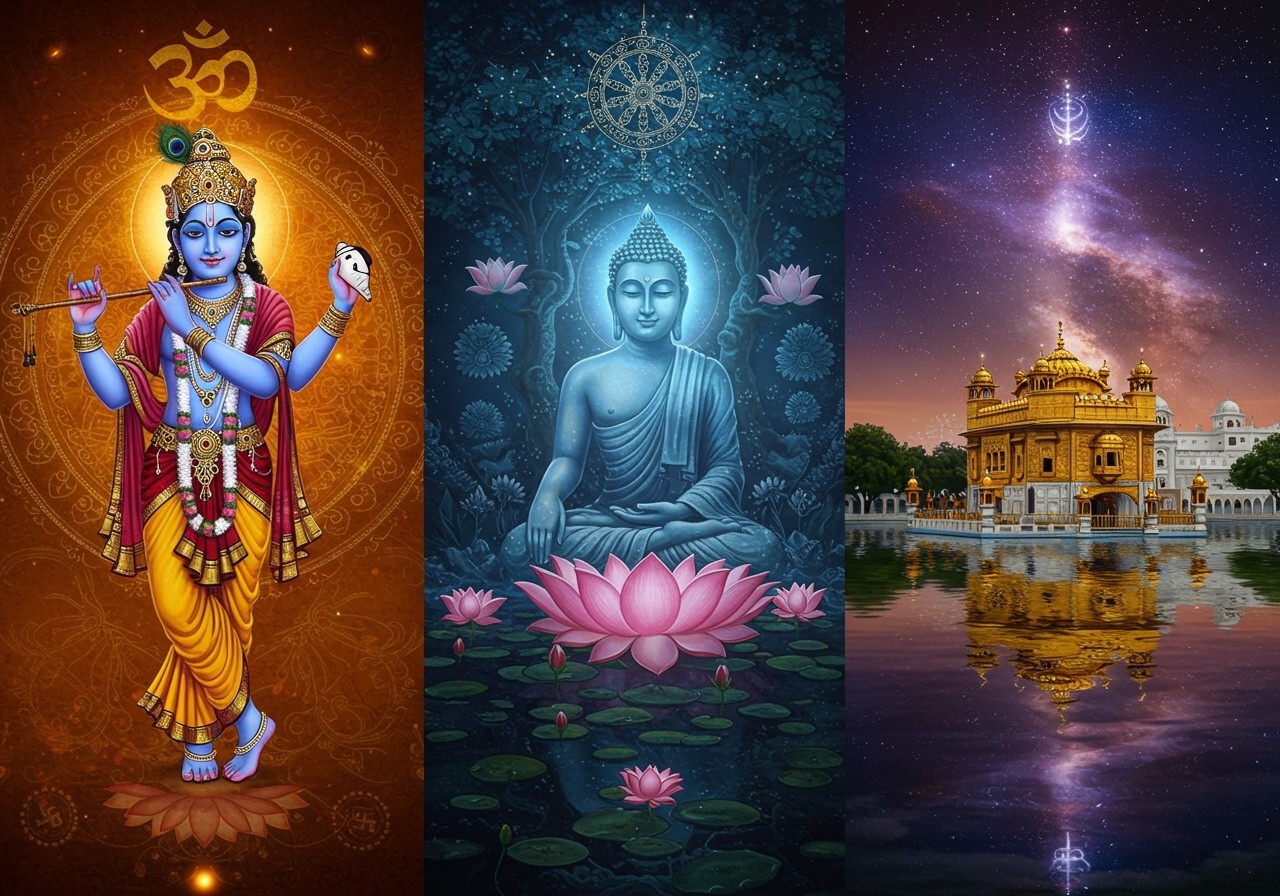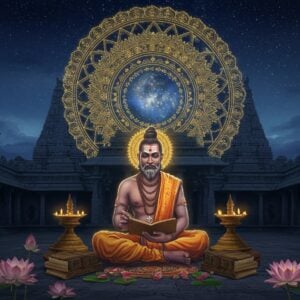
Delving into the rich heritage of Dharma traditions reveals the intricate connections between Hinduism, Buddhism, and Sikhism. These spiritual paths share a common ground in the Indian subcontinent, yet each possesses a unique identity. By appreciating their philosophical roots and historical development, we gain insights into their enduring relevance for Indian communities across the globe. Let’s embark on a journey to understand these intertwined yet distinct spiritual paths.
Origins and Historical Development
The origins of these Dharma traditions provide essential context for their distinct paths. Hinduism, considered one of the world’s oldest religions, boasts sacred texts like the Vedas and a complex array of deities. Its emphasis on rituals and philosophical concepts has evolved over millennia, deeply influencing Indian culture. Buddhism emerged around the 6th century BCE with Siddhartha Gautama, the Buddha. It started as a reform movement within Hinduism, focusing on personal enlightenment and detachment from worldly desires. Sikhism, founded by Guru Nanak in the late 15th century CE in the Punjab region, champions monotheism and social equality, drawing inspiration from both Hinduism and Islam.
- Hinduism: Rooted in ancient texts and traditions, Hinduism’s origins trace back over 4,000 years, making it a cornerstone of Indian spirituality. It emphasizes the interconnectedness of all beings and the pursuit of dharma.
- Buddhism: Founded by Siddhartha Gautama (the Buddha) around the 6th century BCE in India, Buddhism emerged as a response to certain aspects of orthodox Hinduism, focusing on the path to enlightenment.
- Sikhism: Established by Guru Nanak in the Punjab region of India in the late 15th century, Sikhism is the youngest of the three religions, integrating elements of both Hinduism and Islam into its unique spiritual philosophy.
These religions evolved within diverse socio-political landscapes, fostering periods of both harmony and conflict throughout history. Understanding this background allows us to appreciate how they’ve shaped and influenced each other’s development over time. For a deeper understanding of Dharma and Karma, explore our blog post Dharma and Karma in Hinduism Explained.
Core Beliefs and Philosophies
Hinduism, Buddhism, and Sikhism—each offers unique perspectives on life’s spiritual journey. At their core lie fundamental beliefs that guide the lives of their followers.
Hinduism
In Hinduism, Dharma signifies moral duty and righteous conduct, guiding individuals in their roles within family and society. Karma, the law of cause and effect, shapes one’s future based on past actions. The ultimate goal for Hindus is Moksha, liberation from the cycle of rebirth, achievable through diverse paths such as devotion (bhakti), knowledge (jnana), or selfless action (karma).
Buddhism
Buddhism reveals that life inherently involves suffering, a truth encapsulated in the Four Noble Truths. The Eightfold Path provides a framework to overcome this suffering through ethical conduct, mental discipline, and wisdom. Unlike Hinduism, Buddhism is generally considered non-theistic, emphasizing personal enlightenment rather than divine worship. The cycle of rebirth, or samsara, continues until one attains Nirvana, a state of profound peace and liberation.
Sikhism
Sikhism centers on unwavering devotion to Ik Onkar, the one supreme God. The Guru Granth Sahib, Sikhism’s revered scripture, serves as a guide for truthful living, emphasizing equality, social justice, and selfless service (Seva). The sense of community is paramount, with shared meals (Langar) symbolizing unity and humility. Liberation from the cycle of reincarnation is attainable through devotion to God and righteous living. Discover more about diverse traditions with our blog post Hinduism’s Global Reach: A Look at Its Diverse Traditions.
Rituals and Practices
Each tradition embraces rituals that strengthen their spiritual teachings and foster a sense of connection.
Hinduism
Hindu rituals encompass daily worship (Puja) at home or in temples, and vibrant festivals like Diwali and Holi. These practices create a rhythm of spiritual observance and celebration, connecting individuals to their faith and community. Meditation and yoga are also integral, fostering inner peace and self-awareness.
Buddhism
Buddhists engage in meditation practices to cultivate mindfulness, compassion, and deeper understanding of reality. Monastic traditions hold a significant place, with monks and nuns guiding communal prayers and sharing teachings. Festivals like Vesak commemorate pivotal moments in the Buddha’s life, reinforcing core values.
Sikhism
In Sikhism, congregational prayers (Sangat) and selfless service (Seva) are fundamental practices, fostering community bonds and promoting spiritual growth. Worship takes place in Gurdwaras, where the Guru Granth Sahib is revered as the eternal Guru. Celebrations like Gurpurab honor the lives and teachings of the Sikh Gurus.
Similarities and Differences
Similarities
- Dharma: All three traditions emphasize righteous conduct and living in accordance with universal principles. Dharma guides individuals towards a life of purpose and harmony.
- Karma: The concept of karma, where actions have consequences across lifetimes, is a shared belief, encouraging mindful actions and ethical decision-making.
Differences
- Concept of God: Hinduism’s pantheon of gods and goddesses contrasts with Sikhism’s strict monotheism and Buddhism’s focus on personal enlightenment rather than a creator god. These differing perspectives highlight the diversity within Dharmic traditions.
- Path to Liberation: The ultimate spiritual goals vary, with Hinduism emphasizing Moksha (liberation from the cycle of rebirth), Buddhism seeking Nirvana (cessation of suffering), and Sikhism focusing on union with God. Each path offers unique practices and philosophies for achieving spiritual fulfillment.
How Poojn.in Supports Your Spiritual Journey
Poojn.in is privileged to assist you in observing and honoring these diverse Dharmic traditions. As India’s leading provider of puja samagri and other religious items, we offer a wide selection of authentic products to support your spiritual practices. Explore our collection at www.poojn.in.
Whether you are seeking Clay Doat for Saraswati Puja , Pure Kalwa Raksha Sutra or Srimad Bhagavad Gita (Bengali Version), we have everything to meet your needs. For those seeking idols, we offer a beautiful collection of Brass Panchmukhi Hanuman Idols, Brass Lord Kubera Murti and many more. Read our detailed comparison of two prominent Sun Temples Konark vs Modhera: A Sun Temple Comparison and explore the Significance of Sun Temples in our engaging blog posts.
Embracing Unity in Diversity
Hinduism, Buddhism, and Sikhism form a vibrant tapestry of spiritual wisdom and cultural richness. Each path offers a unique lens through which to view life and the universe, while sharing a deep reverence for ethical conduct and spiritual growth. Acknowledging both their shared heritage and distinct characteristics allows us to appreciate the beauty of India’s diverse spiritual landscape. As we engage with these traditions, we honor a legacy that continues to inspire and guide countless individuals on their spiritual journeys.


